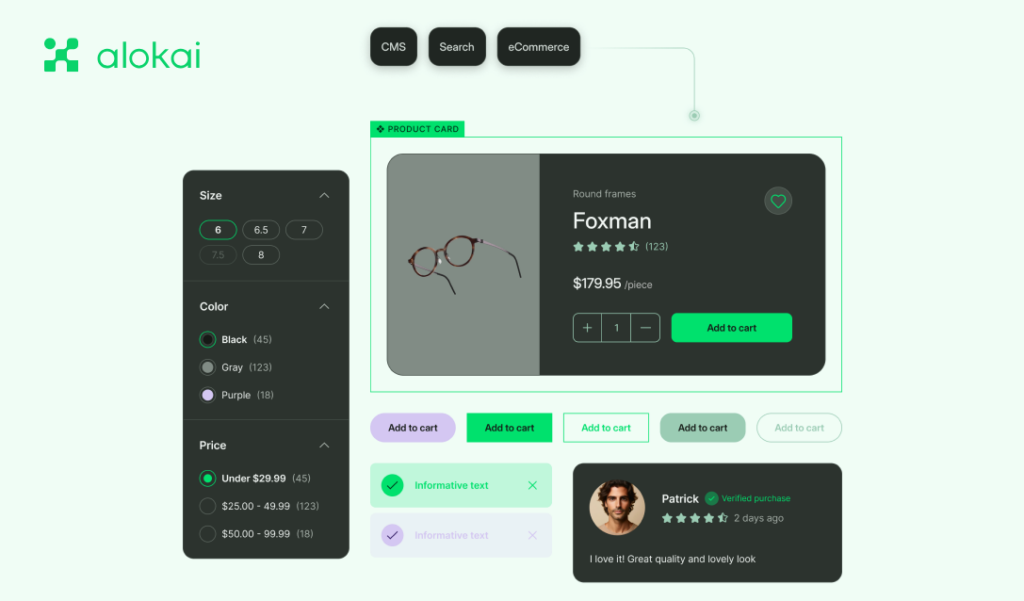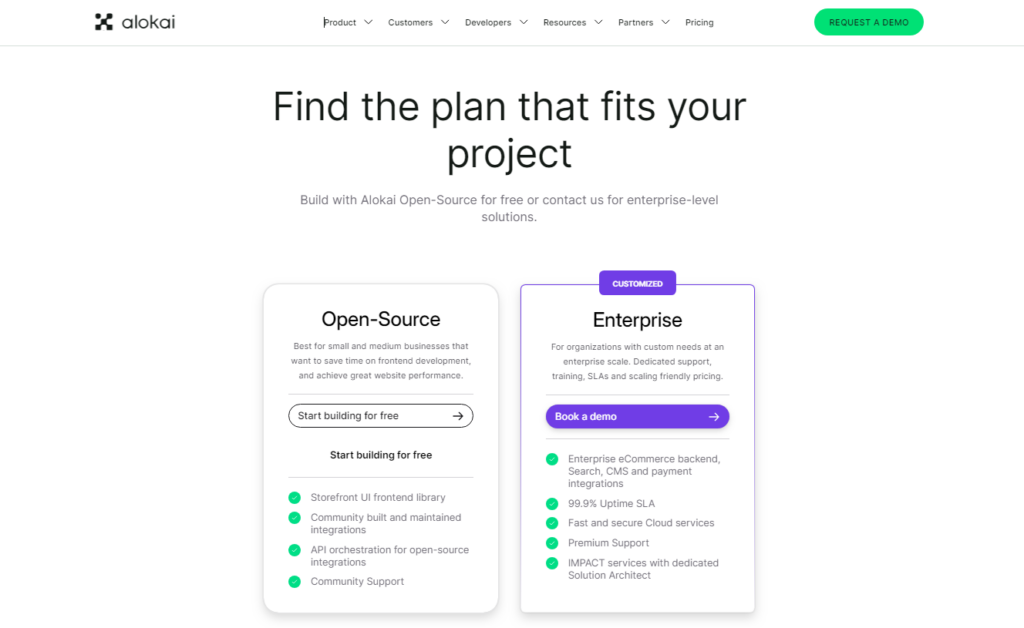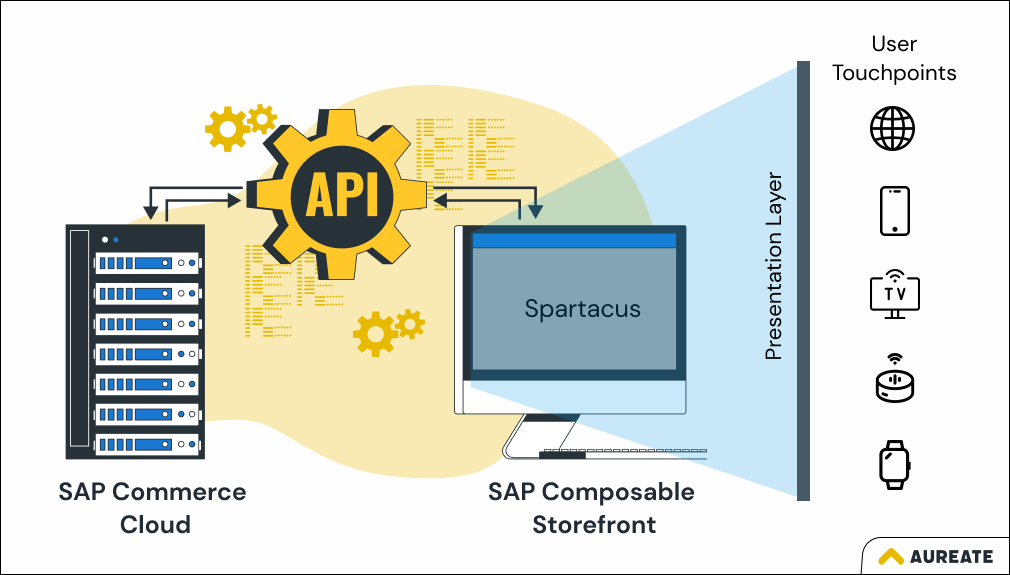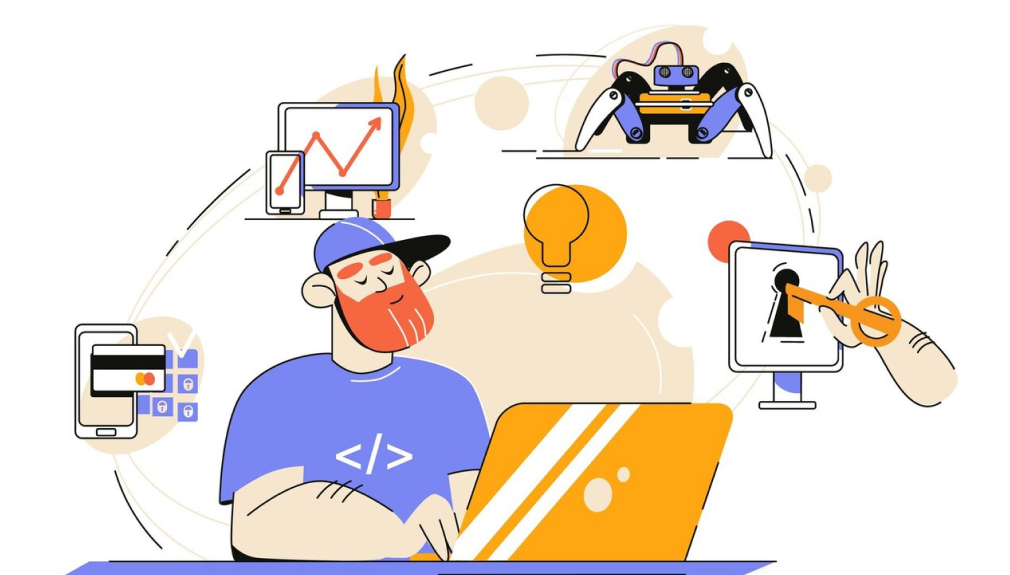Alokai (Formerly Vue Storefront) vs. Spartacus: Which Headless Frontend is Better?

Building an online store that’s fast, flexible, and future-proof is what every eCommerce merchant dreams of.
Thanks to headless commerce, where the presentation layer (UI) dances separately from the backend (commerce engine), there is a way to make your dream true. But for that, you need a comprehensive storefront like your existing eCommerce platform “SAP Commerce Cloud”.
And when it comes to choosing your headless frontend, two contenders rise above the rest: Alokai (Formerly Vue Storefront) and Spartacus (SAP Composable Storefront).
I know, the challenge of picking the right headless frontend is tough as you already have “Spartacus” – a dedicated option for your headless backend. But, don’t worry!
This blog will be your ultimate guide to navigating the “Alokai vs. Spartacus” battlefield. We’ll delve deep into their strengths, weaknesses, and unique features that will help you to make an informed decision for your next headless SAP Commerce Cloud store.
Let’s start with the basics!
Headless Frontend 101

Frontend is simply the user interface of a website that the visitors can see and interact with. With the arrival of the Headless approach, the frontend is no longer tied to any specific backend technology.
Instead of directly generating the website’s content, the backend exposes its data and functionality through APIs (Application Programming Interfaces). These APIs act as messengers, carrying information back and forth between the frontend and backend.
Now, you’re not limited to pre-built themes or templates with your traditional eCommerce platforms, i.e. SAP Commerce Cloud. Headless frontend solutions allow you to craft a unique storefront that seamlessly integrates with any backend system.
For example: You want to add a personalized product recommendation carousel to your homepage. In a traditional or monolithic architecture, this would involve backend developers tinkering with the core source code. With headless commerce, the frontend team simply builds the carousel using the product data API, seamlessly plugging it into the existing UI.
You can choose any Frontend tool or framework you like to build the website’s visual elements, like React, Vue, or Angular. This gives you more flexibility and freedom to create unique and engaging user experiences.
Let’s meet the contenders in the ring!
Alokai (Formerly Vue Storefront)

What is Alokai (Formerly Vue Storefront)?
Alokai (Formerly Vue Storefront) is a Frontend as a Service (FEaaS) solution designed to empower developers and businesses to build, deploy, and manage scalable eCommerce storefronts with ease.
No more coding from scratch, no more struggling with complex backend integrations. Alokai takes care of the heavy lifting, freeing you to focus on what matters most: your unique brand and customer experience.
Built on a Platform-agnostic architecture and backed by a thriving community, it offers a rapid development environment with extensive customization flexibility. This makes it a popular choice for both headless commerce and monolith platforms.
Best for: Businesses seeking a wider range of integrations and a fully headless approach!
Key Features
- Storefront UI: Use the UI elements like Buttons, Checkboxes, and Modals that are built with Tailwind CSS to create more advanced components for your Headless storefront.
- Pre-built, customizable components: Get a jump start on development with a library of ready-to-use UI elements and functionalities, like product listings, shopping carts, and checkout flows.
- Headless CMS integration: Integrate with your preferred headless CMS to manage your website content and product information independently.
- B2B Support: Enjoy the B2B features implementation effortlessly for your SAP CC store with a little configuration.
- Cloud-optimized infrastructure: Easily bootstrap your project, deploy to different environments, and manage your storefront in the cloud.
- API Orchestration: Connect all your services (eCommerce platform, headless CMS, etc.) under a single API for seamless integration and data management.
- Acceleration Features: Enjoy lightning-fast storefronts with features like server-side rendering, caching strategies, and a globally distributed cloud infrastructure.
- Open-source: Alokai is an open-source project with a large and active community, which means there are plenty of resources and support available.
Pros of Alokai Framework
- Framework-agnostic: Alokai can be integrated with any backend system, regardless of the underlying technology.
- Customization Flexibility: Design and tailor your storefront to your unique brand identity and customer needs, without limitations.
- Rapid Development: Pre-built components and APIs significantly reduce development time, allowing you to launch your storefront faster and focus on what truly matters – your business.
- Strong Community Support: Alokai boasts a thriving community of developers and contributors, offering readily available help and resources.
Cons of Alokai Framework
- Complexity: Alokai can be complex to set up and customize, especially for those unfamiliar with Vue.js.
- Limited features in the Community Edition: The free Community Edition of Alokai has limited features, which may not be enough for some businesses.
Alokai’s Pricing

Alokai offers a free Open-Source edition with limited features, as well as paid Enterprise editions with new features and support.
Spartacus (SAP Composable Storefront)

What is Spartacus?
Spartacus, now officially known as SAP Composable Storefront, is not just a storefront; it’s a headless, composable, and open-source framework powering modern ecommerce experiences for SAP Commerce Cloud (SAP CC).
Built on Angular, Spartacus separates the frontend presentation layer from the backend commerce engine that works independently on the decoupled architecture.
While no longer an open-source project, its legacy lives on as the core of the official SAP Composable Storefront (version 5.0). This newer iteration is specifically tailored for B2B eCommerce, packing features like Multi-Site Data Isolation, B2B Unit-Level Orders, and Account Summaries.
So, what happened to the original Spartacus? While the 4.x version is no longer publicly available, its essence remains alive within the new composable commerce storefront technology.
As a SAP Commerce Cloud user, you have a choice: adopt the official B2B-focused version or explore alternative composable storefront solutions from other vendors. Ultimately, the decision rests on what fits your business needs best.
Read More: What is Composable Commerce?
Best for: Businesses already invested in the SAP ecosystem!
Key Features
- Headless Architecture: Decouples the front-end (Spartacus) from the back-end (SAP Commerce Cloud) via REST API, enabling independent development and deployment.
- Angular Framework: Utilizing Angular as its base, Spartacus provides a robust and feature-rich framework for building performant and dynamic storefronts.
- Component-based UI: Build your storefront using pre-built and customizable UI components like product listings, carts, and checkout flows.
- Customizable Themes and Templates: Craft unique branding and user interfaces tailored to your brand identity.
- API-driven Data Access: Integrate seamlessly with SAP Commerce Cloud through its well-defined REST API for product data, promotions, customer information, and order management.
Pros of Spartacus Storefront
Made for SAP Commerce Cloud exclusively: For existing SAP users, Spartacus offers a seamless connection with the backend, leveraging existing features and data through the familiar Commerce REST API.
- Strong B2B Capabilities: The B2B-focused version excels with features like Multi-Site Data Isolation, Unit-Level Orders, and Account Summaries, making it ideal for complex B2B scenarios.
- Headless Architecture for Scalability: Although not truly headless, the API-driven nature allows for separate deployment cycles and scalable frontends.
- Improved Developer Experience (DX): Version 5.0 introduces features like lazy loading and code splitting, enhancing developer experience compared to earlier versions.
- Open-Source Core (4.x): While the latest version is not open-source, the core of Spartacus remains available on GitHub, fostering community contributions and potential future forks.
- Reduced Development Time: Spartacus offers pre-built storefront templates and accelerators, potentially speeding up development for common B2B functionalities.
Cons of Spartacus Storefront
- Steep Learning Curve: The Angular-based tech stack presents a learning curve for merchants, requiring expertise that can be expensive and time-consuming to acquire.
- Limited Customization Flexibility: The prebuilt storefront design restricts deep customization, forcing merchants to choose between minor tweaks or potentially rewriting the entire codebase.
- Not Truly Headless: Despite appearances, Spartacus’s monolithic design and reliance on SAP solutions limit integration options, hindering true headless commerce flexibility.
- Vendor Lock-in: Dependency on SAP Commerce Cloud creates a vendor lock-in scenario, making it difficult and potentially costly to migrate to other eCommerce platforms in the future.
- Closed-Source Nature of Newer Version (5.x): The restricted access to the latest version of Spartacus limits transparency, community contributions, and independent learning opportunities.
- Potential Performance Bottlenecks: The use of Angular, while powerful, can introduce performance considerations, especially for resource-intensive B2B applications.
- Limited Community Support (Newer Version): With the new version being private, community support and troubleshooting resources might be less robust compared to the open-source 4.x version.
- Closed-source B2B version: The new B2B-focused version is exclusive to SAP Commerce Cloud customers, thus eliminating open-source access and customization opportunities.
- Alternatives with More Flexibility: Other composable storefront solutions might offer greater flexibility in customization, headless architecture, and integration options.
Spartacus’s Pricing
Spartacus comes at no cost for SAP Commerce Cloud merchants. However, development costs can be there based on the complexity of your project and the level of customization required.
So, we learned both frontend frameworks in detail. Now we’ll examine them together to find out the better one for your business needs.
Let’s go!
Alokai vs. SAP Spartacus: Which One is Better?
After getting familiar with the contenders, now it’s time to see the real fight.
| Factor | Alokai | SAP Spartacus | Winner |
| Headless Architecture | Pure headless | Partial headless | Tie |
| Technology Stack | Vue.js, and supports React and Nuxt.js through extensions | Angular | Alokai |
| Development Experience | Easy to use, developer-friendly | Requires more hands-on coding | Alokai |
| Customization and Extensibility | Highly customizable with open-source code and extensive theme options | Good extensibility, customization may require code diving | Alokai |
| B2B Capabilities | Offers B2B features implemenation | Built-in B2B functionalities for SAP Commerce Cloud | Tie |
| Performance and Scalability | High-performance | More scalable | Tie |
| Community and Support | Large and active community + SLA for merchants | Smaller community and no SLA for merchants | Alokai |
| Frontend Hosting | No additional frontent hosting cost with Enterprice plan | Hosting the frontend is an additional cost | Alokai |
| Pricing | Enterprise plan (paid) | Free with SAP CC License | SAP Spartacus |
This comparison will help you understand which platform might be a better fit for your needs across key factors:
Headless Architecture

Both Alokai and SAP Spartacus are headless commerce platforms, which means that they separate the front-end (the user interface) from the back-end (the business logic). This allows for greater flexibility and scalability, as you can use any front-end framework you like with either platform.
However, there are some key differences between the two platforms in terms of their headless architecture. Alokai is a pure headless platform, which means that it does not have its own back-end. This means that you will need to integrate it with a separate back-end system, such as Magento or Shopify.
SAP Spartacus, on the other hand, is a partial headless platform, which means that it has its own back-end system, and you cannot use a different back-end system than SAP Commerce Cloud.
Technology Stack

Alokai is built on top of Vue.js, a popular JavaScript framework. Alokai uses a variety of open-source technologies, such as React, Nuxt.js, and modern frameworks like SSR and PWA, resulting in faster performance and smoother user experience.
SAP Spartacus is an Angular-based JavaScript storefront (another popular JavaScript framework). It utilizes Angular and SAP Hybris libraries, which can be less familiar to many developers and potentially slower than Alokai’s tech stack.
Development Experience

Alokai is known for its ease of use and developer-friendly features. It provides a variety of pre-built components and integrations that can help developers save time and money.
SAP Spartacus is a more complex platform than Alokai, and it can be more challenging to develop. However, it offers more flexibility and customization options.
Customization and Extensibility
Both Alokai and SAP Spartacus are extensible platforms, which means that you can customize them to meet the specific needs of your business. However, Alokai is generally considered to be more extensible than SAP Spartacus. This is because Alokai is built on top of Vue.js, which is a very flexible framework.
B2B Capabilities
SAP Spartacus is specifically designed for B2B commerce, while Alokai is primarily focused on B2C commerce. However, Alokai can be used for B2B commerce with some customization.
Performance and Scalability

Both Alokai and SAP Spartacus are high-performance platforms that can scale to meet the demands of large businesses.
However, SAP Spartacus is generally considered to be more scalable than Alokai. This is because SAP Spartacus is built on top of the SAP Cloud Platform, which is a highly scalable platform.
Community and Support

Alokai has a large and active community of developers and users. This means that you can easily find help and support if you need it. SAP Spartacus is a newer platform, and its community is not as large as Alokai’s. However, the Spartacus team provides excellent support for its products, tools, and services.
Pricing
To use Alokai for your SAP CC platform, you need the Enterprise edition which includes frontend hosting. This means that you don’t need to pay additional costs for hosting your headless storefront.
SAP Spartacus is absolutely free for SAP CC merchants. So, you don’t have to spend a single penny if you pick this frontend framework for your Headless website. But, here you need to consider the frontend hosting cost.
Notes: This comparison is based on the latest information available at the time of writing. Both Alokai and SAP Spartacus are constantly evolving, so it’s important to stay updated on their latest features and functionalities.
What is the Right Headless Frontend For Your Business?
Two popular options – Alokai and SAP Spartacus – both offer compelling features and advantages.
But, which is better? The answer depends on your priorities:
Choose Alokai if:
- You prioritize absolute flexibility and control over your new storefront.
- You value performance and modern technology.
- You have a diverse tech stack and need integrations with non-SAP services.
- You want access to a large and active community.
Choose SAP Spartacus if:
- You are heavily invested in the SAP ecosystem and prefer seamless integrations.
- You need built-in B2B functionalities.
- You already have a SAP Commerce Cloud subscription and want a free headless option.
Ultimately, the best storefront solution is the one that aligns seamlessly with your unique business needs and technical preferences. Take your time, evaluate your priorities, and test both platforms before making your decision.
Build your Headless Storefront with Aureate Labs!
As an Official Partner of SAP Commerce Cloud and Alokai, we can build an exceptional SAP Headless store for you.

No matter which storefront framework you choose, to build amazing commerce experiences, you need the right Frontend Development partner. And Aureate will always make you feel that you have made the right choice!
Our team of Headless Commerce experts can help you with…
- Platform Selection & Integrations
- UI/UX Design & Development
- Custom Storefront Development
- Performance or Speed Optimization
- Customizations & Integrations
- Conversion Rate Optimization (CRO)
We don’t believe in one-size-fits-all solutions. Our experienced designers will craft stunning and intuitive user interfaces that capture your brand essence and drive conversions.
What makes us one step ahead is — We provide FREE 3 Months of Post Support! So, don’t worry, we won’t abandon you with the unknown challenges even after your headless store is launched successfully!
Ready to get started? Contact us today for a free consultation!






Post a Comment
Got a question? Have a feedback? Please feel free to leave your ideas, opinions, and questions in the comments section of our post! ❤️